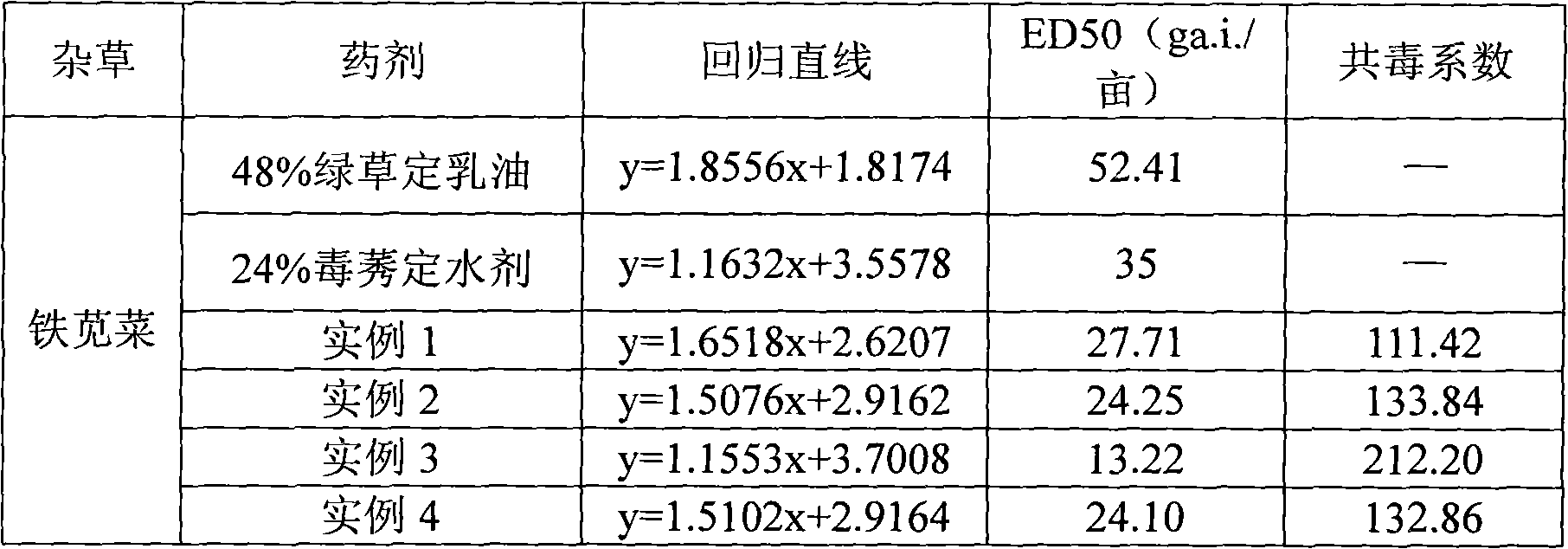Synergistic herbicidal composition containing triclopyr and picloram and use thereof
A herbicidal composition, triclopyr technology, applied in the fields of herbicides and pesticides, can solve the problem of incomplete and effective control of weeds and small shrubs in forest land and non-cultivated land, residual toxicity of current crops or subsequent crops, and dosage of pesticides Unevenness and other problems can be achieved to improve drug efficacy, delay weed resistance and prolong service life
- Summary
- Abstract
- Description
- Claims
- Application Information
AI Technical Summary
Problems solved by technology
Method used
Image
Examples
Embodiment 1
[0023] Picloram 7%, triclopyr 15%, NP-10 phosphate 4%, polyoxyethylene polyoxypropylene co-embedded 5%, alkylphenol formaldehyde resin polyoxyethylene ether 2%, water supplement 100%, according to the routine The preparation method is mixed with the water preparation that the mass percentage composition is 22%.
Embodiment 2
[0025] Picloram 16%, triclopyr 30%, calcium dodecylbenzenesulfonate 5%, alkylphenol ethoxylate 4%, phenethylphenol ethoxylate 5%, xylene to 100%, according to The conventional preparation method is prepared into an emulsifiable concentrate with a mass percent content of 46%.
Embodiment 3
[0027] 10% of picloram, 70% of triclopyr, 5% of sodium lauryl sulfate, 3% of ammonium sulfate, 2% of polyvinyl alcohol, and 100% of kaolin, according to the conventional preparation method, the mass percentage is 80%. water dispersible granules.
PUM
 Login to View More
Login to View More Abstract
Description
Claims
Application Information
 Login to View More
Login to View More - R&D Engineer
- R&D Manager
- IP Professional
- Industry Leading Data Capabilities
- Powerful AI technology
- Patent DNA Extraction
Browse by: Latest US Patents, China's latest patents, Technical Efficacy Thesaurus, Application Domain, Technology Topic, Popular Technical Reports.
© 2024 PatSnap. All rights reserved.Legal|Privacy policy|Modern Slavery Act Transparency Statement|Sitemap|About US| Contact US: help@patsnap.com










